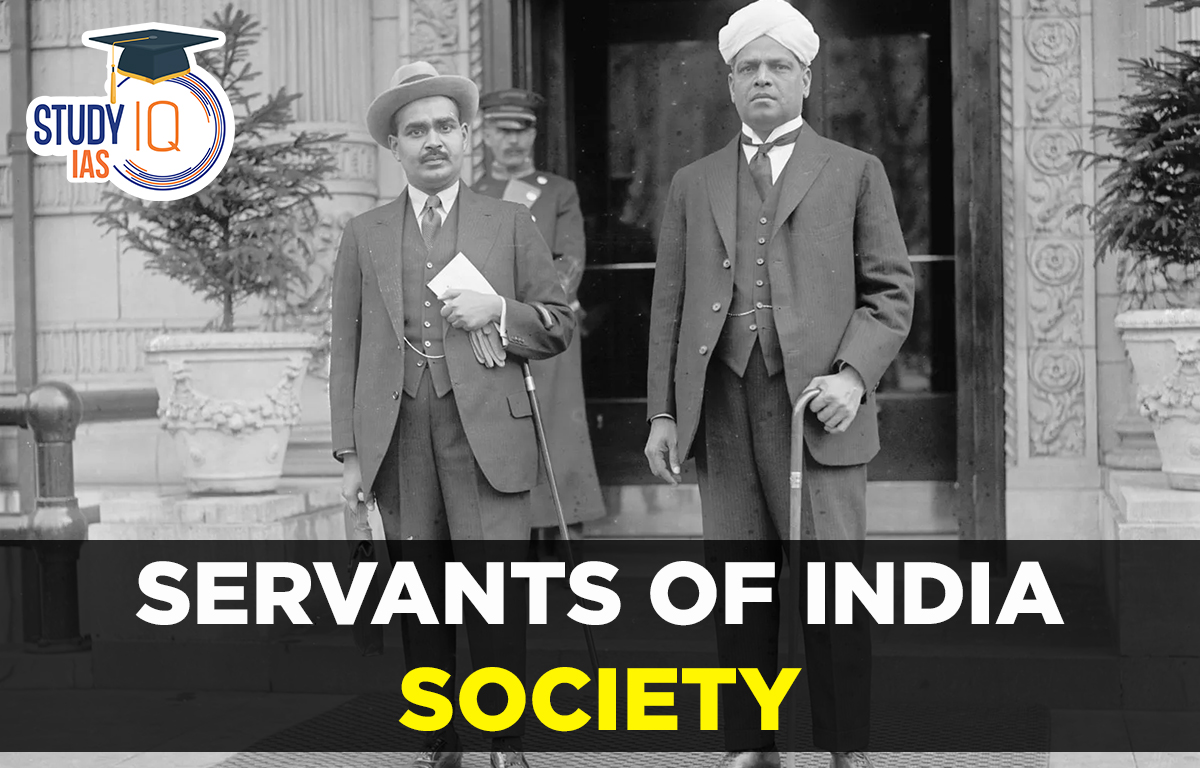Table of Contents
Servants of India Society
Gopal Krishna Gokhale (1866–1915) established the Servants of India Society in 1905 with the aid of M.G. Ranade. In the late 19th and early 20th centuries, one of the most notable figures in the Indian National Movement was G.K. Gokhale, whom Mahatma Gandhi regarded as his political master.
The Servants of India Society, a unique organisation that operated with severe discipline and loyalty to the country, was founded as a result of Gokhale’s passionate patriotism. For anyone preparing for the UPSC exam, this article’s detailed discussion of the Servants of India Society’s founding, operations, and goals can be beneficial.
Read More: Satyashodhak Samaj
Servants of India Society History
Gopal Krishna Gokhale created the Servants of India Society on June 12, 1905, with the help of a number of committed people like Gopal Krishna Deodhar, Anant Patwardhan, Natesh Appaji Dravid, and others. It was the first secular organization in the nation devoted to helping underprivileged, rural, and tribal peoples, as well as with emergency relief, literacy, and other social issues.
Members agree to serve on extremely low pay after a five-year training period. These employees are required to swear renunciation, give up any egotistical desires, bragging rights, or renown, and unite with their tasks and obligations. The company is headquartered in Pune (Poona), and it also has offices there as well as in Nagpur, Allahabad, Chennai, and Mumbai. The society has remained significant in its demonstration of social service concepts even though its membership has decreased over time.
Read More: Prarthana Samaj
Servants of India Society Aim
Gopal Krishna Gokhale founded the Servants of India association after leaving the Deccan Education Society. It was the nation’s first secular organization devoted to social issues, emergency aid, literacy, and disadvantaged, rural, and tribal populations.
In order to battle social ills including untouchability, discrimination, drunkenness, poverty, and the exploitation of women, the society launched several programs to boost education, hygiene, and health care.
The Society’s English-language journal, Hitavada, debuted in Nagpur, India, in 1911. Its goal was to educate Indians on social services while bringing together Indians of all ethnicities and religious convictions. The nation’s first secular organisation put social issues and underprivileged rural and tribal populations as a priority.
Members agree to serve at a very low wage after completing five years of training. Gokhale succeeded Srinivasa Sastri as president in 1915. (1869-1946). In addition to its headquarters in Pune, the company also has offices in Mumbai (Bombay), Allahabad, Nagpur, and other places (Poona).
Read More: Paramahansa Mandali
Servants of India Society Features
The Servants of Indian Society’s objectives were to educate national missionaries for service in India and to further the genuine interests of the Indian people only through legal channels. The Society spearheaded various campaigns to tackle societal issues such untouchability and prejudice, alcoholism, poverty, the subjugation of women, and domestic violence protection while also promoting education, cleanliness, and health care.
This fraternity was founded as a result of Gokhale’s theories that the people needed a group of selfless, intelligent workers who would devote their lives to serving the country’s needs if they were to be allowed to participate as active citizens of a free India. He insisted on spiritualizing public life and establishing discipline and lofty ideals in his team of employees so that the Society might establish an extraordinary and unmatched record of service for the good of the country.
The Hitavada started to be published in 1911 with the intention of expressing societal viewpoints. The Indian National Congress and other political organizations were avoided by society.
Read More: Arya Samaj
Servants of India Society UPSC
As president after Gokhale’s passing in 1915, Srinivasa Shastri took over. The customs and heritage of the Society are still practised today. Despite having a smaller population base, many areas of India nonetheless maintain a functional society. It works in education, offering indigenous girls ashram-style schools, and ballad is in many different places.
Read More: Brahmo Samaj


 Nagari Pracharini Sabha Revival: Backgro...
Nagari Pracharini Sabha Revival: Backgro...
 Ryotwari System in India, Features, Impa...
Ryotwari System in India, Features, Impa...
 Battle of Plassey, History, Causes, Impa...
Battle of Plassey, History, Causes, Impa...





















